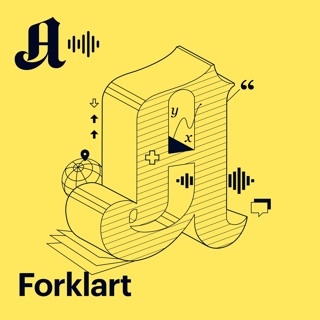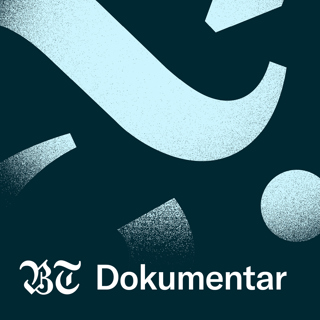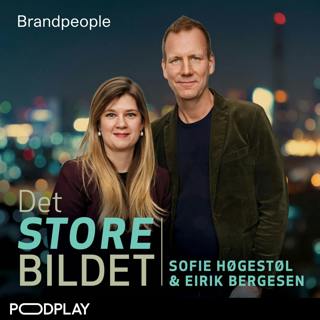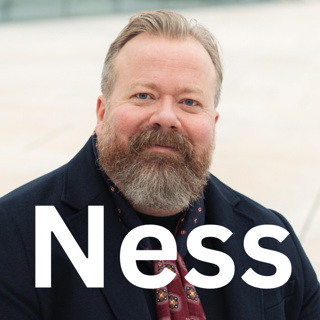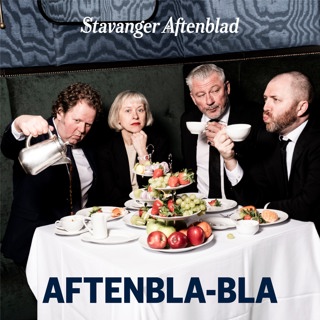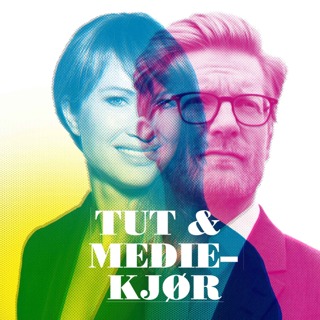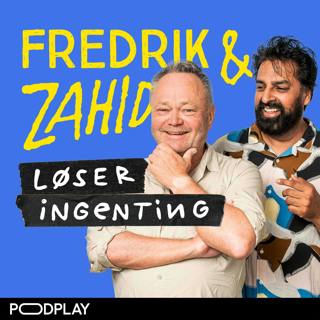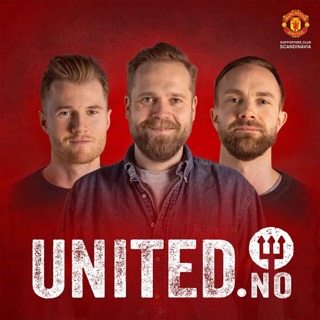
Fashion Flux: Deals, Trends, and Sustainability Shifts in the Global Industry
In the past 48 hours, the global fashion industry has been marked by significant market activity, high-profile deals, and shifting consumer trends. The most notable recent deal is Guess signing a 1.4 billion dollar take-private agreement with Authentic Brands Group. This partnership will see Authentic Brands owning a majority stake in Guess’s intellectual property, positioning both entities for expansion and immediate operational autonomy under Guess’s current leadership. Industry insiders view this as a move to strengthen brand ecosystems and consolidate market influence in response to rapid shifts in global fashion preferences.Recent retail data indicate robust seasonal sales. Nordstrom’s newly launched fall sale includes high-profile discounted goods from luxury designers such as Saint Laurent and Tory Burch. This is part of an industry-wide push toward transitional wardrobe pieces, from linen blazers to crescent bags. Sizes and colors are moving quickly, reflecting heightened consumer urgency ahead of traditional back-to-school and work seasons. Analyst reports suggest brands are using deep sales and curated collections to boost inventory turnover and engage shoppers who remain wary of inflation.Meanwhile, new product launches and collaborations are driving interest as legacy brands reinvent themselves. Lilly Pulitzer’s Vintage Vault collection debuted with archival prints and timed drops for women and girls, responding to nostalgia and exclusivity demand. A notable example of next-generation material adoption is Lululemon and Tapestry forming long-term partnerships with alternative material suppliers, signaling a continued shift towards sustainability.Significant supply chain news includes regulatory movement. The US-EU trade framework announced this week sets a new reciprocal tariff rate at 15 percent for apparel imports, but crucially, this rate will not be stacked on existing most-favored nation tariffs. Industry associations estimate this could help maintain price stability and protect more than 10 million US jobs linked to fashion manufacturing and retail.Disruption is surfacing through legal and financial maneuvers. Skechers’s 9.4 billion dollar planned go-private deal advanced after a shareholder lawsuit was withdrawn, and bankruptcy-stricken Claire’s secured a 140 million dollar private equity takeover that will pause most store liquidations, preserving brick-and-mortar footprints.Compared to previous months, market leaders now respond with sharper digital campaigns, refreshed capsule collections, and more collaborative charity efforts. With New York Fashion Week on the horizon, brands are leveraging exclusive experiences and charitable initiatives to build affinity. The current environment is characterized by rapid restructuring, aggressive seasonal promotions, supply chain adaptation, and a continued pivot toward eco-minded products.For great deals today, check out https://amzn.to/44ci4hQThis content was created in partnership and with the help of Artificial Intelligence AI
22 Aug 2min

Fashion Industry Resilience and Innovation Amid Evolving Trends - Exploring IFCO, LA Market, and Brand Collaborations
In the past 48 hours, the global fashion industry has demonstrated resilience and innovation amid cooling demand and evolving consumer trends. Major events like IFCO’s 8th edition in Istanbul are underway, hosting over 250 exhibitors and 30,000 visitors from 100 countries, signaling sustained international interest and a strong focus on next-generation design leadership and trend curation. This week’s LA Market Week in Los Angeles is also attracting attention as an influential trade platform, supporting emerging designers and highlighting West Coast influence on style.Several key partnerships and deals have made headlines. Adidas announced a five-year, 13.5 million dollar partnership with Miami-Dade County Public Schools to outfit student athletes, demonstrating fashion’s ongoing integration with sportswear and youth markets. New retail collaborations continue to reshape consumer access and brand revival; Topshop and Topman’s exclusive, in-store return to Liberty in London this week has reignited interest in physical retail for legacy brands.In terms of product launches and collections, Louis Vuitton’s new campaign with athlete Jude Bellingham and Tommy Hilfiger’s SailGP line highlight the enduring appeal of celebrity-driven marketing. Chanel’s scent launch in China and PUMA’s “Squishmallows” collaboration indicate how luxury and casual brands are seeking traction in new markets and with diverse audiences. Licensing and brand collaborations across categories, such as Baby Phat’s anniversary expansion and SmileyWorld’s jewelry line with Thomas Sabo, reflect increasing cross-category experimentation.Despite continued innovation, there are clear signals of changing consumer behavior. Amer Sports reported a slowdown in sales for its Arc’teryx outerwear, with omni-channel growth at 15 percent this quarter, missing Wall Street’s 19 percent expectation. However, the company raised its full-year sales forecast to 21 percent growth, up from 17, signaling industry optimism even in the face of cooling premium demand. Incentive pricing, such as White House Black Market’s promotions, further underlines a shift towards value-driven shopping as inflationary pressures persist.In comparison to the spring, current market activity shows intensified competition, proactive portfolio diversification, and renewed investment in both digital and physical channels. Industry leaders are strategically responding by fortifying partnerships, accelerating expansion into experiential retail, and fine-tuning product offers to reflect changing buying habits and global uncertainties.For great deals today, check out https://amzn.to/44ci4hQThis content was created in partnership and with the help of Artificial Intelligence AI
20 Aug 2min

Fashion's Evolving Landscape: Partnerships, Sustainability, and Emerging Tech (137 characters)
In the past 48 hours, the global fashion industry has seen a mix of strategic partnerships, market shifts, sustainability pushes, and emerging technologies shaping its landscape. Major trade headlines include the 8th edition of IFCO, opening this week in Istanbul, which highlights Turkiye’s design leadership and is set to draw over 30,000 global attendees. This arrives as brands seek new sourcing hubs amid changing trade terms and increased tariffs. For instance, the EU and Vietnam reached a deal lowering threatened 30 percent tariffs to 15 percent on most goods as of August 19. This move offers some stability and cost relief to many multinational fashion brands compared to last quarter’s uncertainty.In the US, Adidas just announced a landmark five-year, 13.5 million dollar deal to outfit Miami-Dade’s school athletes, grabbing attention with both its scale and the future consumer pipeline it represents. Meanwhile, Adidas is positioned to capture further market share this year as Nike’s performance lags, with rivals like Shein, Uniqlo, Skechers, and New Balance also gaining ground.Several fashion brands are leveraging partnerships and product launches to win consumers. In early August, Gap joined with Béis for a new luggage and apparel collection, while Anthropologie spun off its Maeve private label into a new standalone brand set to launch stores this fall. Celebrity ties also remain strong, with Nicole Kidman signing a likely 15 million dollar deal as Chanel brand ambassador.Sustainability remains a pivotal theme. Shein was fined 1.16 million dollars for greenwashing and quickly announced reductions in supply chain emissions, including electric transport initiatives in China. Both textile innovation and regulatory pressure continue to accelerate, with global expectations rising for traceability, durability, and eco-scores in products.AI-driven trend forecasting is enabling brands to respond faster to shifts in consumer tastes, which increasingly prioritize value over luxury branding. According to Circana, only 14 percent of US beauty buyers link higher prices with better quality, and travel-size fragrances saw a 15 percent unit sales increase, four times faster than other sizes, showing budget consciousness after several years of inflation.Overall, compared to previous quarters, the industry is navigating cost pressures and shifting trade conditions with a focus on innovation, adaptability, and value for the new cautious consumer. Supply chains remain pressured but new deals and digital tools are helping leaders respond with agility and targeted launches.For great deals today, check out https://amzn.to/44ci4hQThis content was created in partnership and with the help of Artificial Intelligence AI
19 Aug 2min

Fashion Industry Evolves: Partnerships, Direct-to-Consumer Surge, and Resilient Luxury Demand
In the past 48 hours, the global fashion industry has experienced notable shifts driven by new licensing deals, product launches, and evolving consumer trends. Recent market activity illustrates a strong focus on strategic partnerships. Swiss brand On raised its full-year outlook despite challenges from currency fluctuations and U.S. tariffs. On’s direct-to-consumer sales surged, with net sales of shoes climbing nearly 30 percent in the second quarter, and apparel growing a remarkable 67.5 percent to 36.7 million Swiss francs. The brand also implemented selective price increases in July and does not expect further hikes this quarter, reflecting resilient demand even amid macroeconomic uncertainties.Major licensing agreements are reshaping industry dynamics. Skechers is moving ahead with a planned nine point four billion dollar go-private deal after a shareholder suit blocking the transaction was dropped. Nicole Miller signed a significant licensing partnership for Latin America, prioritizing Mexico for expansion. Baby Phat is celebrating its twenty-fifth anniversary with a licensing expansion. Collaboration remains a hallmark: Gap launched a travel-oriented apparel and luggage line in partnership with Béis, and Nike linked up with Lego to debut basketball-themed playsets and children’s apparel.Consumer behavior is shifting toward luxury and archival collections as witnessed by Lilly Pulitzer’s announcement of its Vintage Vault series launching multiple drops of women’s and girls’ apparel, beginning this August. Anthropologie is elevating its private label Maeve to a stand-alone brand with dedicated stores later this year. Additionally, Harris Tapper’s autumn-winter campaign features opulent textures and colors, targeting demand for premium aesthetics.Supply chain challenges persist, particularly in the U.S. second-hand sector, as immigration enforcement has led to labor shortages and shipment delays according to reports by Bank and Vogue. Vendors also report overdue payments from Saks Global, reflecting broader financial pressures.Industry leaders are responding by restructuring operations and embracing innovation. For instance, Nike is reorganizing teams and preparing for a one billion dollar tariff impact as its revenue fell ten percent in the second quarter.Compared to prior months, current trends show accelerated partnerships, pronounced growth in direct-to-consumer sales, and a resilient appetite for premium products, but financial and logistical challenges remain prominent. These ongoing responses and pivots underscore how the fashion sector is navigating rapid change amid economic and regulatory uncertainty.For great deals today, check out https://amzn.to/44ci4hQThis content was created in partnership and with the help of Artificial Intelligence AI
14 Aug 2min

The Future of Fashion: Navigating Uncertainty with Tech, Scarcity, and Loyalty Rewards
The global fashion industry is in a mixed but active state over the past 48 hours, marked by fresh collaborations, tech-enabled launches, and selective runway moves, while consumer spending remains focused on novelty and value-driven experiences[1][5][4].New product and runway activity- Kith will return to the runway on August 17 with a tight, insiders-only show titled Institution, previewing Fall 2025 and multiple collaborations, signaling brand confidence and a push for scarcity-led hype outside the NYFW calendar[5]. - Editors highlight August launches including Sporty & Rich x New York Yankees and Latin American Fashion Awards milestones, reinforcing a late-summer pipeline of drops to sustain demand between fashion weeks[1].- Meta and Nigerian label I.N. Official debuted Transcendence, positioned as the first AI-powered fashion collection at Africa Fashion Week London on August 9, with Meta AI tools used from fabric selection to storytelling, underscoring rapid adoption of AI in design workflows to compress timelines and broaden reach[3].Deals and partnerships- Koozie Group partnered with SanMar to launch a contract decoration service with free next-day shipping from SanMar, adding access to 350 plus bags and multiple decoration methods, a sign of supply chain streamlining and speed-to-market pressure in soft goods and accessories[6].- Apparel Group’s Club Apparel linked with PRYPCO Blocks to let loyalty members convert rewards into fractional real estate stakes, reframing fashion loyalty as financial utility amid price sensitivity and a search for tangible value[4].Consumer behavior and pricing- The surge in collaboration and limited-run runway reveals suggests brands are leaning on scarcity, community, and experiential access to defend pricing and maintain heat, compared with earlier seasons that relied more on large-scale drops and discounting[5][1]. - Loyalty innovation tying spend to investment indicates a pivot from pure points to wealth-building benefits, designed to drive higher engagement without deep markdowns[4].Technology and supply chain- AI-led design showcased by Meta and I.N. Official is being presented as a way to reduce production timelines and amplify global distribution via digital platforms, compared with prior years when AI was used mainly for marketing imagery[3].- Contract decoration and next-day logistics between major suppliers highlight ongoing near-term investments in last-mile customization and inventory flexibility rather than large inventory bets[6].Leadership responses- Brands like Kith are curating small, hype-centric showcases to control narrative and demand.- Conglomerates and suppliers are building partnerships to accelerate custom assortments and lower operational friction[6][4].- Platform players are using AI to empower emerging designers and differentiate creative pipelines[3].Compared with earlier reporting this year, today’s moves show an incremental shift from mass seasonal spectacle toward targeted access, AI-enabled speed, and loyalty value engineering to navigate cautious consumers while protecting margin[5][3][4][6][1].For great deals today, check out https://amzn.to/44ci4hQThis content was created in partnership and with the help of Artificial Intelligence AI
12 Aug 3min

The Fashion Industry's Shift Toward Sustainability, Collaborations, and Discounts
The global fashion industry is in a cautious, promotion-heavy mood over the past 48 hours, with brands leaning on discounts, collaborations, and sustainability messaging while consumers gravitate to value and wardrobe-building over impulse buys[6][4][7]. Retailers are running sizable price promotions, including extra 30 percent off on sale styles through August and back-to-school offers that indicate margin pressure and an ongoing bid to stimulate traffic[6]. Mall promotions show widespread discounting across apparel and accessories, with up to 50 percent off reported in recent days, reinforcing a value-driven consumer shift[4].New product and collaboration activity remains brisk. Sportswear and footwear drops are anchoring traffic, with Nike and Converse rolling out multiple colorways and celebrity tie-ins, while luxury and watch brands expand cross-category partnerships to reach fashion audiences[2]. Retailers are also pushing trade-in and recycling programs, signaling supply circularity and cost-conscious buying as brands seek loyalty and inventory balance[6].Design direction for Fall Winter 2025 emphasizes considered silhouettes and longevity, marking a turn away from fast fashion-led impulse purchases toward thoughtful wardrobe building, a shift aligned with current consumer behavior[7]. Event calendars and runway recaps underscore sustainability as a core theme, with European fashion weeks spotlighting emerging talent and upcycling narratives to meet audience expectations and regulatory momentum[3][8].Consumer behavior this week shows three clear signals. First, high engagement for discounted basics and school-season replenishment points to budget sensitivity. Second, sneaker and athleisure launches continue to anchor demand, benefiting brands with steady drop cadences[2][6]. Third, Gen Z driven sustainability and upcycling stories remain a draw in events and local showcases, sustaining traffic even as discretionary spending tightens[8][1].Compared with prior weeks, current conditions show heavier promotional breadth, broader collaboration news, and sharper sustainability positioning to offset softening full-price sell-through[6][4][2]. Fashion leaders are responding by 1 ramping promotions and loyalty incentives, 2 leaning into limited editions and celebrity collaborations to maintain heat, and 3 amplifying circular programs and durable design narratives to align with demand for value and longevity[6][2][7]. Continued discounting suggests ongoing inventory calibration and selective price elasticity tests as the industry navigates a value-first consumer and prepares for Fall delivery windows[6][4][7].For great deals today, check out https://amzn.to/44ci4hQThis content was created in partnership and with the help of Artificial Intelligence AI
11 Aug 3min

Fashion Industry Faces Sustainability Challenges and Business Shifts Amidst Regulatory Changes
The global fashion industry is currently facing a period of dynamic change marked by shifting market forces, heightened sustainability concerns, and notable business activity. Over the past 48 hours, industry headlines reveal both escalating challenges and emerging strategies among key players.Recent data shows a marked increase in the sector’s environmental impact. According to a new report from the Apparel Impact Institute, greenhouse gas emissions in the fashion industry rose 7.5 percent in 2023 to reach 944 million metric tons, reversing previous gains in emission cuts. This was driven largely by increased production—especially ultra-fast fashion brands like Shein, whose emissions jumped over 23 percent in the last year—along with a rise in the use of cheap virgin polyester, now accounting for 57 percent of global fiber production. Despite these setbacks, some leaders like H and M achieved a 23 percent reduction in so-called Scope 3 emissions, while manufacturers such as Artistic Milliners invested heavily in renewable energy, indicating pockets of progress. Still, the cost of decarbonization, especially for smaller suppliers, remains a significant hurdle, limiting momentum for broader change in supply chains and price structures.On the business front, the past two days have seen a burst of deals and partnerships. Gildan, reporting a record 6.5 percent sales increase for the second quarter, announced S and S Activewear as its exclusive wholesale distributor for American Apparel in the US and Canada, starting in December. S and S Activewear itself has expanded rapidly, posting a 71 percent revenue jump since 2023, partly via major acquisitions and licensing deals. In luxury, Tapestry completed the sale of Stuart Weitzman to focus on core handbags, and new brand collaborations were announced at every tier—from Puma’s partnerships to the launch of heritage capsules and sustainability-focused collections.Regulation is tightening as well. A key development is the imminent end of the de minimis exemption on low-cost imports in the US, effective August twenty ninth. This will make low-value shipments, including fashion, subject to full duties, raising import costs and possibly driving up consumer prices.Against this backdrop, industry leaders are emphasizing innovation and values. Zalando, for example, honored the Nigerian label IAMISIGO at Copenhagen Fashion Week for bold ethical design and community empowerment. These moves reflect a search for differentiation as consumer tastes increasingly favor authenticity, social impact, and responsible sourcing even as price sensitivity persists.Overall, compared to last quarter, the industry is navigating higher cost pressure, greater regulatory scrutiny, and a more fragmented competitive landscape. Yet, sectoral leaders and disruptors are responding through strategic partnerships, investments in sustainability, and bold branding initiatives designed to capture emerging consumer priorities.For great deals today, check out https://amzn.to/44ci4hQThis content was created in partnership and with the help of Artificial Intelligence AI
8 Aug 3min

Title: Fashion's Transformation: Mergers, Athleisure Boom, and Evolving Consumer Habits
The global fashion industry is seeing robust growth, major consolidation, and evolving consumer habits in the last 48 hours. European luxury leaders reported strong financials with Hermès and Prada both announcing 9 percent sales increases for the latest quarter while Kering appointed a new CEO, signaling ongoing leadership changes among industry giants. Meanwhile, the luxury activewear segment is accelerating, growing at an estimated 8 percent annually, as brands chase legacy value and manufacturing synergies[1][2].Headline-grabbing deals have marked this period. Most notably, Prada’s 1.4 billion dollar acquisition of Versace has united two of Italy’s most iconic fashion houses, emphasizing a broader trend toward cross-border mergers and acquisitions. Chinese sports giant Anta Sports acquired Jack Wolfskin for 290 million dollars, showing demand for high-equity and heritage-driven brands[2]. Additionally, British retailer Next’s acquisition of Seraphine exemplifies efforts to diversify and modernize portfolios in both luxury and mass-market segments[1].New partnerships and launches are vibrant. Skims has expanded into face shapewear and Macy’s debuted its first On 34th brand collaboration with award-winning designer Alix Friedberg, blending retro glamour with contemporary direction[1][6]. Topshop has re-entered the market with a major runway show and branded collaborations, aiming to recapture consumer attention around its new digital platform[3]. Licensing and celebrity partnerships remain central strategies, as PUMA’s collaborations with celebrities and AI-driven sneaker design reflect efforts to stay relevant with younger consumers[4][5].Competitors are multiplying, particularly in the fast-growing athleisure market where challenger brands carved out market share from giants like Nike and Adidas. From 2019-2024, Nike and Adidas lost 3 percent combined market share to more agile players with sharper brand positioning[5]. In India, a surge of homegrown labels is meeting rising demand for affordable, innovative activewear[5].Consumer behavior continues to favor experiential retail and inclusive community-focused events, like the high-profile return of Topshop and the inaugural Aspen Fashion Week running August 7 to 10, which features local and global talent alike[3][7]. The buy-now-pay-later trend and supply chain innovations are further fueling shopping booms, especially in emerging markets[5].Relative to last year, M and A activity is surging, price points in luxury continuing to rise, and there is increased focus on localized offerings and fast adaptations to shifting trends. Top leaders are responding to macro pressures and generational shifts by investing in digital, sustainability, and high-profile collaborations.For great deals today, check out https://amzn.to/44ci4hQThis content was created in partnership and with the help of Artificial Intelligence AI
6 Aug 3min





